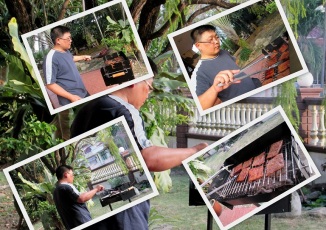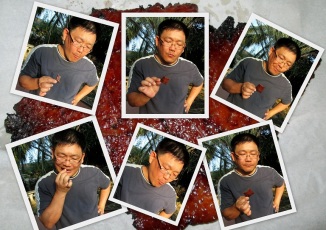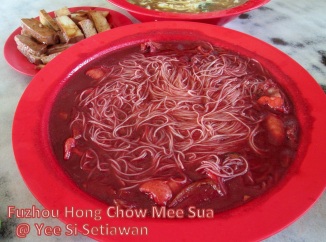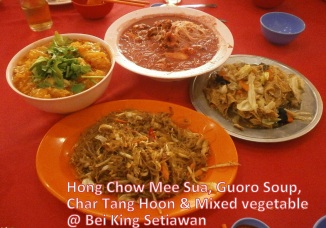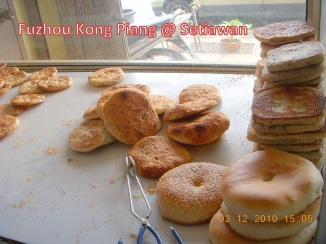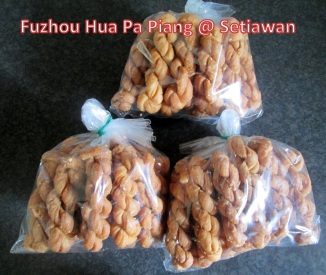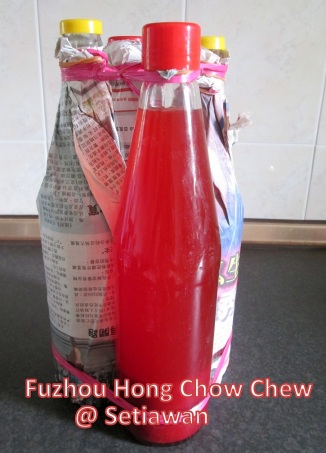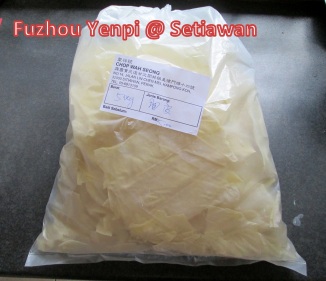Planters, European planters, predominantly British, returned eagerly to reclaim their rubber plantations around Sungai Petani or SP as she has been fondly known since her founding days in 1912. The mere mention of names like Harvard Estate, Scarborough Estate and UP Estate would always stir up endearing childhood memories amongst Sungai Petani’s older generation.
Undeniably, SP is a relatively young township, its location was specifically chosen by W.G. Maxwell, Kedah’s 1st British Adviser, to replace the old coastal town of Kota Kuala Muda as the center of administration for Central Kedah. SP is strategically located between Kulim & Butterworth in the south and Alor Star in the north, right smack in the middle of the State of Kedah.
Kedah or Kodaram is the oldest state in Malaya/Malaysia boasting of the thriving Indo-Buddhist civilization in the surrounds of Bujang Valley dating back to 100AD, while the ancient Kedah Sultanate could trace her beginning to the 9 Indian Princes that ruled the region. The Sultanate was actually founded from 1136AD when the last of the Indian Princes, the 9th Prince embraced Islam and took the name of Sultan Mudzafar Shah I. The legendary cruel fanged Raja Bersiong, Kedah’s very own “Dracula” was the 5th Prince to rule the region.
Prior to 1912, SP was just a small riverside Malay village, Penghulu Him, along the Sungai Petani river with another a small collection of huts upstream inhabited by some early Chinese migrants around Pekan Lama today. Apart from being the administrative center, SP was also chosen to be a new market township to support the burgeoning rubber industry. Metaphorically, SP was built on rubber which explained the strong Indian community presence in the town till today.
The advent of railway and the strategic stopover at SP the same year entrenched SP as the key commercial and administrative/military town in Kedah. The structure of the original 1912 train station has been transplanted to the Jubilee Park since 2013. The town’s police station along the Jalan Ibrahim at the junction to Pekan Lama was built on 1916, and she still stands guard today. As a testament of SP’s prosperity, HSBC Bank built an impressive Moorish-design building in 1921 and has been open for business since 1923.
SP also boasts of her iconic clock tower which was built in 1936 by a local philanthropist, Mr Lim Lean Teng to commemorate the Silver Jubilee (25th anniversary) of the marriage, in 1893, of King George V, then Prince George Frederick Ernest Albert the Duke of York, to Princess Victoria Mary of Teck, who became his consort with the title Queen Mary.
It has been oft said whenever three or four Englishmen get together they form a club and make a race track and, of course, a golf course. Hence, it was not surprising when the British officers and planters did just that within the year of the founding of SP in a bungalow opposite the old general hospital. They went on to formally set up the SP Club and moved to her present location in 1922, a decade later. That is how SP Club was founded, and her club house still stands proud today.
It was the tales and buzz of a new nearby town being established on the Malayan Peninsula that attracted and fascinated Kai Chang since the first day he set foot on Penang Island until the day he finally ventured to Sungai Petani in 1925. Now that War was over, and the European planters were back in droves, it was back to business as usual, to build a future for his children.
Kai Chang woke up unworried for the first time in a long while before dawn. It was chilly, misty and still dark with gentle wind whispering through the trees. He reverently lit some joss sticks and knelt down before his ancestral altar and offered prayers and thanksgiving to his ancestors and the Heaven. Then he dragged out the sacks of Banana money onto the backyard and set them alight. They burst into a ferocious bonfire flame clawing angrily at the darkness and searing away the blanketing mist.
He stood and watched the bonfire silently, absorbed in deep contemplative thoughts, trancelike until they were all but burnt ashes. Good riddance. A gush of cool wind sent shivers down his spine and shook him from his trance. He grimaced, turned and walked back into his shop to wash up. And the sun had begun to peek over the horizon burning away the mist and chasing away the darkness of the night to signal the dawning of a bright new day.
Kai Chang made his way to the RAF Aerodrome at today’s Ibrahim Secondary School. He joined the throngs of mostly men folk making their way to the Aerodrome eager to witness the formal surrender by the Japanese Imperial Army to the British Army and the handover of their katana and arms. The procession was cheery, high-spirited and animated, and boisterously cacophonic.
Kai Chang crossed the street to HSBC Bank building which was used as the HQ by the Imperial Army and beside it, the wretched bungalow where the dreaded Kempeitai interrogated and tortured many victims. The town’s clock tower stood witness to the many going in and a few coming out. Those who never came out were just herded across the field at the back towards the lime kilns along the river and executed. Some 130 met their fate there. Kai Chang was grateful to be alive despite living across the very corridors and jaws of death.
They passed through the town’s administrative center, Union Jack aloft, then the garden where some horses left by the Japanese officers were nonchalantly grazing, thereafter up a slope. They passed by St. Theresa School, Christ the King Church and Father Barre’s Convent to join those who had arrived earlier at the Aerodrome. They waited expectantly in high spirits. Some kids were play acting in the Zero planes left in disrepair.
A bugle called to attention. Ranks of Japanese soldiers paraded onto the field and stood to attention before the British ranks. God saves the King was sung as the Union Jack was raised. Formal surrender documents were signed by both commanding officers followed by the ceremonious handover of his official katana. Arms, mainly Arisaka rifles and bayonets sheathed in scabbards were neatly laid down by NCOs and common soldiers, followed by the Katana swords by officers. The ceremony was militarily formal and somber.
The Japanese prisoners of war, officers, NCOs, rank and file common soldiers, were then marched off to be imprisoned in guarded barracks behind barbed wires. Their shoulders slumped and heads hung low in defeat, their eyes avoiding the stares of the gathered townsfolk in shame, led by their commanding officer, they marched listlessly towards their imprisonment. Gone were their fiery tempers and condescending arrogance. The gate as if the very gate of Hell clanked shut.
A hushed silence descent upon all present, both in relief and unbelief momentarily, and then suddenly a deafening roar of exuberance erupted as it dawned on everyone that the dreaded days were finally over! The damned war was over! The atmosphere was electrifying, celebratory. Men cried unabashedly not from grief but relief and joy.
Later that afternoon, a work detail of some 50 Japanese prisoners of war were marched with shovels towards Bakar Kapor where limestone was burnt in those days to produce cementing mortar. The kilns had been long abandoned, the place shunned. A dirty, dark and gloomy place strewn with weather bleached skulls and bones. Some claimed insatiable malevolent spirits still roamed menacingly there angry and bitter from the injustice suffered. The place reeked of putrefaction and death. The place was haunted.
The work detail was charged with the gruesome task of searching for the bodies or skeletons of those summarily executed by the Kempetai for a proper burial. They scoured the mud bank and searched along the abandoned riverbank where the sweet stench of death still pervaded. They found many bones and skulls but no skeletons wholly intact. Many had been washed away by tidal waters and some eaten by voracious crocodiles and even carnivorous monitor lizards. Whatever bones or skulls they found were respectfully washed in the river scouring away the mud and dirt before reverently laid down on a piece of white cloth.
Those who lost family members and friends stood appalled and aghast by the horror. A few frantically tried to identify their lost loved ones but to no success. There would be no closures as none of the victims were identifiable, only stubborn bitter memory. Not too few fainted in shock. Some wailed hysterically. Others wept silently and the rest if not all present were in tears. It had finally dawned upon the local populace the atrocities perpetrated were committed right under their noses, and the victims were family and friends not some unknown dead Commonwealth soldiers.
Not too few vented their anger on the Japanese prisoners of war. They broke through the thin guard barricade and set upon those at the periphery. Shrieks of pain and fear pierced the grieving riverbank. Guards quickly intervened and dispersed the mob. The Captain had to fire a shot from his pistol to stop the frenzy and restore order. The angry mob reluctantly gave up their quarry and retreated away leaving not too few injured bloodied Japanese prisoners of war sprawled on the ground, groaning and bleeding, none fatal though.
Kai Chang ignored the commotions. He was just too absorbed with the grim task on hand. He continued to respectfully clean and wrap the bones in white linen. Tears welled up his eyes each time he picked up a bone. His hands shivered uncontrollably in grief. It could have been one of his friends. He then followed them in a solemn mourning procession all the way to their proper interment and final resting place at Sungai Pasir Chinese Cemetery. They were also migrants like him and many were his friends. He said his final goodbye.
Streaks of lightning clawed angrily across the already darkened sky followed by ponderous cracks of thunder. Suddenly, the turbulent heaven went eerily still holding back her angry torrents. A windless lull descended upon all who gathered for the final send-off. Then it started to pour in the earnest like never before that evening as if Heaven too was weeping inconsolably to mourn the dead and distraughtly to cleanse the town from the stench of death.




